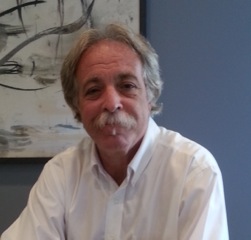
Professor
Research
Work in the Ziegler Group pioneered a number of frequency domain spectroscopic techniques (UV resonance Raman, resonance rotational Raman, resonance hyper-Raman spectroscopy) and helped establish various time domain methodologies in the visible and UV as applied to studies of chemical, biological and materials systems. Current investigations also incorporate ultrafast IR and SERS based approaches for both molecular and cell-level studies.
Current research activities in the Ziegler laboratory are centered on two types of optical spectroscopic methodologies: femtosecond laser spectroscopy and surface enhanced Raman spectroscopy, each employing matter-radiation interactions to address different questions about biological, chemical or materials systems.
- Ultrafast multidimensional IR studies of hydrated phospholipids and nucleic acidsare carried out to learn about the structure and fluctuation properties of “biological waters”. Vibrational energy relaxation and IR photon echo measurements of a reporter molecule (N2O) are used to characterize the static and dynamic properties of these special waters. Interfacial waters of lipid bilayers and nucleic acid structures are central factors influencing the way these molecules interact with their surroundings, mediating membrane, nucleic acid and protein interactions. (with Shyam Erramilli group).
- 2DIR studies of a reporter molecule in supercritical fluids are performed to understanding the fluctuation dynamics of SCFs in the vicinity of the critical point. The goal is to develop a better dynamical description of molecular motions and structures in SCFs in order to explain the special solvation properties of these fluids.
- A novel combined ultrafast experimental-computational approach has been developed to also learn about the nature of solvation in SCFs. The observed ultrafast coherence decays of J-level specific rotational Raman transitions, combined with mixed quantum-classical MD simulations provide a detailed molecular level description of the fluctuation dynamics in these SCFS as a function of density (with the David Coker group).
- Surface enhanced Raman spectroscopy is being developed as a methodology for rapid, sensitive (single cell level), species and strain specific, portable detection and identification of bacterial cells. Sample preparation (with Kathy Clapperich) and SERS substrate development (with Bjoern Reinhard, Luca Dal Negro) are also components of this project along with analytical software development. An additional goal of this project is to provide a molecular level description of the chemical activity of bacterial cells at their outer layers as reflected in these SERS signals.
- Ultrafast studies of some novel semiconductor materials including ; ZnO single crystals (with Enrico Bellotti), Si nanocrystals (with Luca Dal Negro), GaN thin films (with Ted Moustakas), single walled carbon nanotubes (with Anna Swan). Transmission and reflection pump-probe and photon echo measurements are used to learn about the earliest electronic relaxation properties in these materials.
Publications
Techniques & Resources
- A high repetition rate (100 – 300 kHz) Ti:sapphire regenerative amplified femtosecond laser (<50 fs) pumping an optical parametric amplifier (OPA) is used primarily for solid state and chemical studies in the UV or visible.
- A kHz, 7.5 W regeneratively amplified Ti:sapphire (< 35 fs) system pumps 3 OPAs primarily for multidimensional femtosecond IR studies.
- SERS studies are carried out in our dedicated Biosafety Level 2 laboratory
- Our doctoral students benefit from a rich environment for interdisciplinary computational science research at Boston University that is complemented by participation in active collaborations with leading experimental biophysical research labs
What’s Next for Graduates of the Ziegler Group?
The blend of skills required to carry out the spectroscopic studies pursued in the Ziegler lab is intended to impart a broad and thorough background in current experimental techniques (optics, laser design and maintenance, electronics, interfacing, programming, biological and chemical sample preparation) and fundamental matter-radiation physics which are central to a range of careers in the physical sciences. Recent graduates have gone to academic, government or corporate research centers:
- Steve Constantine, Lincoln Laboratory
- Jay Peng, University of Michigan
- Yong Zhou, Pfizer